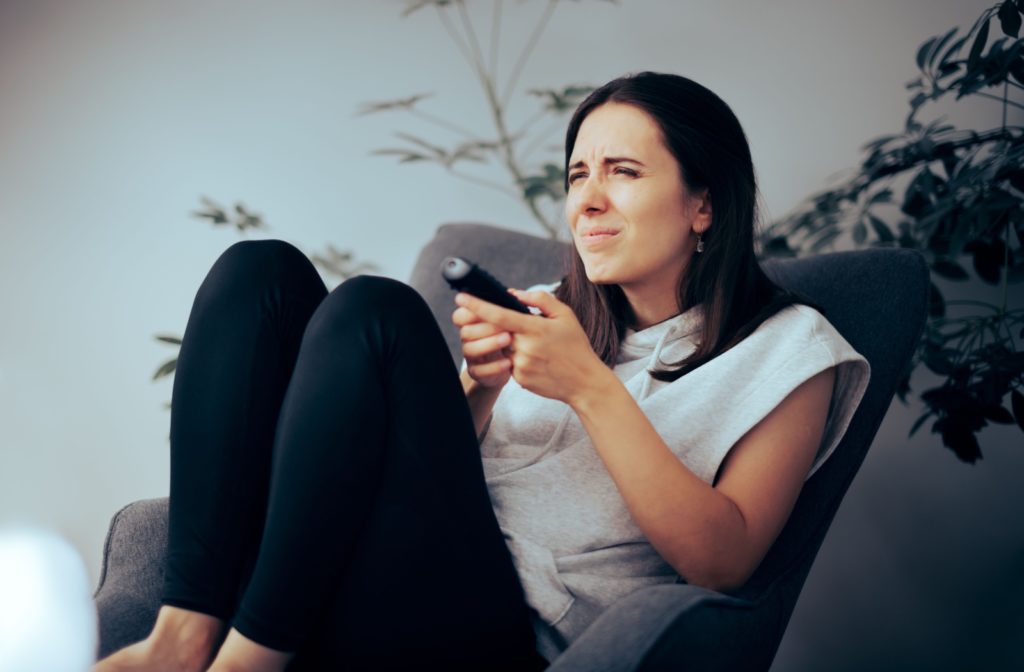Myopia, commonly known as nearsightedness, is an extremely common vision condition that causes objects to appear blurry the further they get from the eye. However, it’s about much more than vision problems—myopia increases the risk of all kinds of eye conditions and diseases later in life. So if you or your child are diagnosed with myopia, what do you do? Can myopia be reversed?
Myopia can be reversed to a certain extent. For children, myopia control is often recommended; this approach involves controlling how the eye develops over the years to reduce future symptoms. For adults, corrective lenses and laser surgery can help reverse myopia symptoms to give you clear vision.
What Is Myopia?
Whenever you look around, light enters through the cornea—the clear dome-shaped tissue at the front of the eye. It bends, or refracts, to focus on the retina. There, it’s sent to the brain as an image.
However, this system relies on the eye being properly shaped. Millions of people worldwide deal with something called “refractive errors,” where the eye develops improperly. Myopia, a common refractive error, occurs when the eye grows too long from front to back.
This physical change in the eye alters how light refracts inside. Myopia causes light to focus in front of the retina, scattering light rays before they reach where they reach the light-sensitive tissues in the eye. Due to this, distant objects appear blurry while nearby objects remain clear; this has led to the condition commonly being referred to as “nearsightedness.” This typically develops in early childhood and progresses over the years before stabilizing in early adulthood.
The Early Signs of Myopia
Detecting myopia early on is key. When addressed early, it’s much easier to prevent long-term vision problems. Try to look out for the following signs:
- Squinting to see distant objects
- Headaches
- Difficulty seeing the blackboard
- Holding devices or books very close to the face
- Excessive blinking
- Rubbing eyes frequently
- Complaining of eye fatigue after prolonged visual task
If you recognize any of these signs, it’s time to visit your optometrist for a comprehensive eye exam.
How to Treat Myopia
It’s important to note that since myopia is a problem with the shape of your eye, it can’t naturally be reversed; once the eye elongates, the change is permanent. Instead, treatment for myopia aims to alter light as it enters the eye to naturally accommodate your refractive error.
Treatment depends greatly on your age. For adults, corrective lenses are usually recommended. For children, it becomes a little more in-depth.
Corrective Lenses
The most common way to correct myopia is through eyeglasses or contact lenses. These lenses help refocus light onto the retina to give you clear vision.
However, your prescription may change over the years. It’s crucial to regularly visit your optometrist for eye exams if you wear glasses or contacts; this helps make sure your prescription is up to date to give you proper vision.
Myopia Control
For children, myopia control is often recommended. This approach aims to address how the eye develops over the years and slow it wherever possible to preserve more of your child’s vision.
There are several approaches to myopia control:
- Atropine eye drops: These include a low dose of concentrated atropine to temporarily dilate the pupils. These work well when combined with other methods of myopia control.
- Orthokeratology (Ortho-k): This involves wearing specially designed rigid contact lenses overnight to temporarily reshape the cornea. Once removed, your child has clear vision during the day without the need for glasses or contacts.
- Multifocal lenses: These lenses are designed to reduce eye strain and slow myopia progression by providing different levels of focus at varying distances. They can be used in both eyeglasses and contact lenses.
Before making any decisions, it’s essential to talk with your child’s optometrist. They can examine your child’s eyes to determine the right approach to myopia control.
Laser Eye Surgery for Myopia
For adults with a stable eyeglass prescription, laser eye surgery may be an option. This procedure reshapes the cornea to permanently correct your natural refractive error, removing your need for contacts or eyeglasses.
LASIK, or laser-assisted in-situ keratomileusis, is the most common type of laser surgery for myopia. It’s a quick, safe, and effective way to permanently treat the condition. However, not everybody qualifies for LASIK; the ideal candidate must:
- Be over the age of 18 with a stable prescription for at least one year
- Have generally good eye health without conditions such as cataracts or severe dry eye
- Have a cornea that’s thick enough to safely undergo the procedure
- Not be pregnant or nursing, as hormonal changes can affect vision
Before making any plans, you’ll need to visit your optometrist for a laser eye surgery consultation. They can explain the process and examine your eyes to determine whether or not you qualify for the surgery.
Get Help for Your Myopia
If you or your child are struggling with myopia, there’s no need to suffer in silence. Instead, come see our team at Doctors EyeCare Grande Prairie. We can work together to find the right solution for you. Book an appointment with us today to take the first step towards clear lifelong vision!




